Blood - Notes, Biology | General Awareness - Bank Exams PDF Download
| Table of contents |

|
| Blood |

|
| Constituents |

|
| Red Blood Corpuscles (RBC) |

|
| White Blood Corpuscles (WBC) |

|
| Platelets |

|
| Plasma (65%) |

|
| Lymph |

|
| Blood Groupings |

|
Blood
Blood, a vital fluid, is composed of plasma, red blood cells (RBCs), white blood cells (WBCs), and platelets, each playing a crucial role in maintaining bodily functions like oxygen transport, immune defense, and blood clotting. It is a fluid connective tissue. It is 6.8 litres in man and 500 ml less in woman. It is 6 - 8% of body weight (pH 7.4).
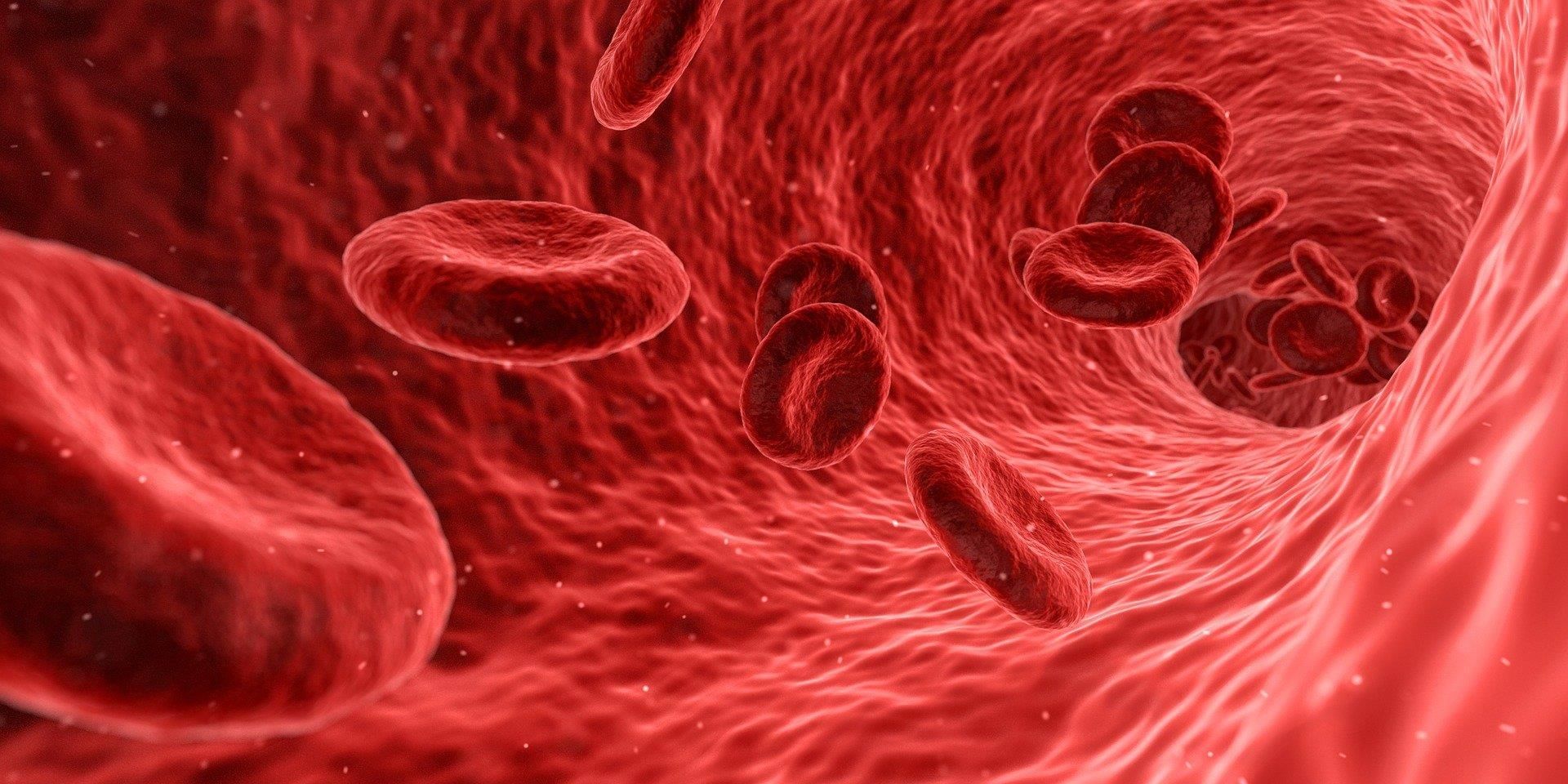
Constituents
1. Plasma
What it is: The liquid component of blood, making up about 55% of its volume.
What it contains: Water, electrolytes, nutrients, hormones, proteins (including clotting factors, antibodies, and albumin), and waste products.
Function: Serves as a transport medium for blood cells, nutrients, hormones, and waste products. 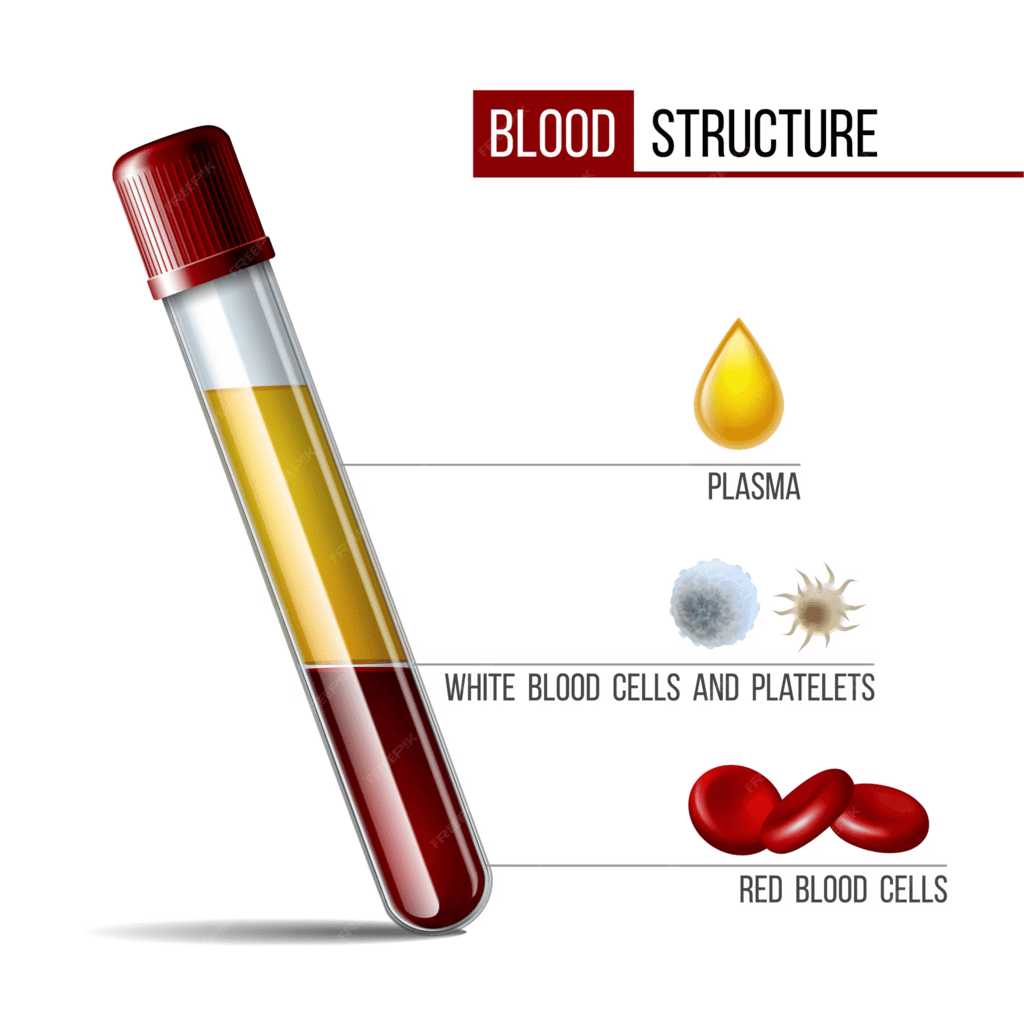
2. Red Blood Cells (RBCs) / Erythrocytes
What they are: Specialized cells responsible for carrying oxygen from the lungs to the body's tissues and transporting carbon dioxide back to the lungs.
What they contain: Hemoglobin, a protein that binds to oxygen.
Function: Oxygen transport and carbon dioxide removal. 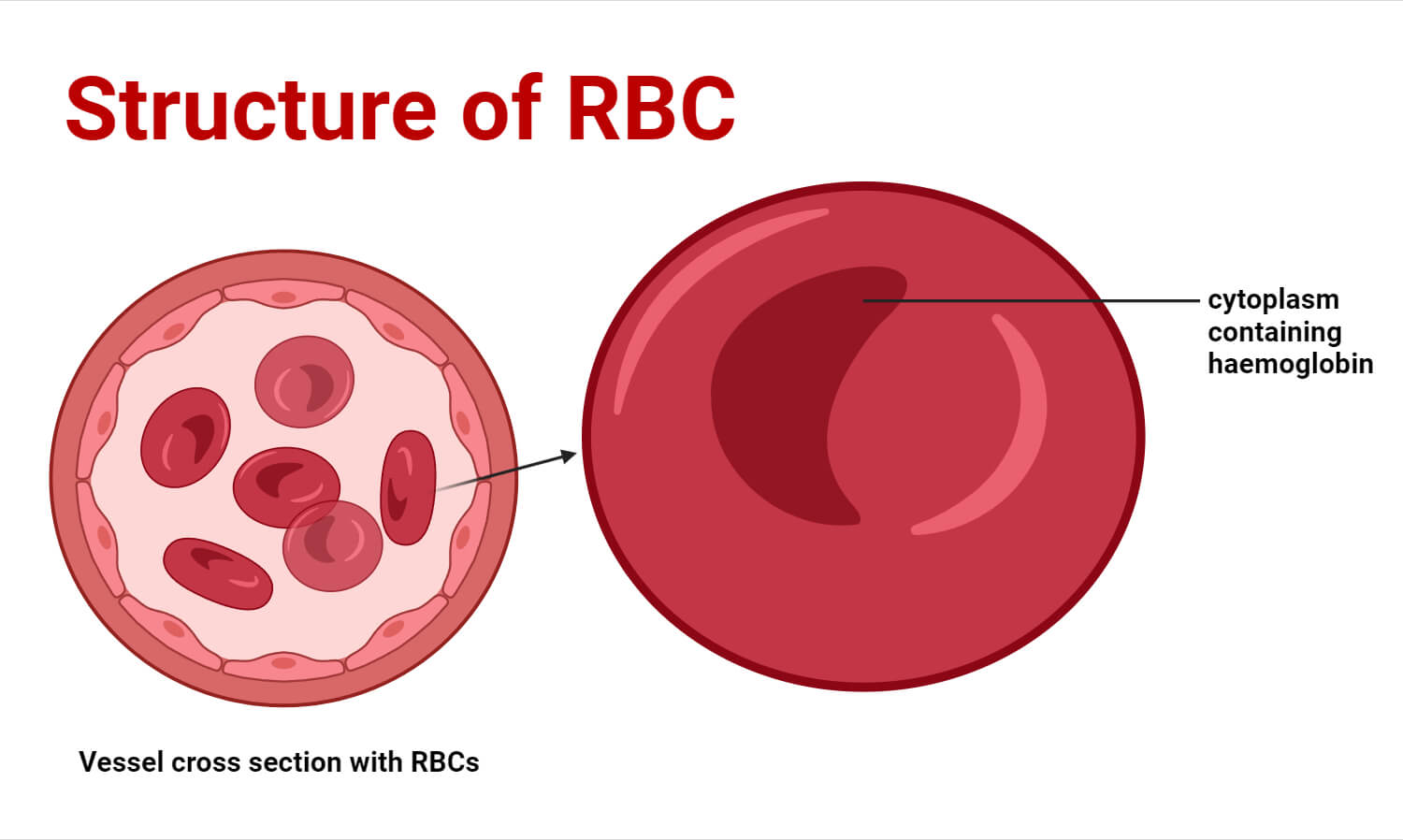
3. White Blood Cells (WBCs) / Leukocytes
What they are: Cells of the immune system that defend the body against infections and foreign substances.
Types: Neutrophils, lymphocytes, monocytes, eosinophils, and basophils.
Function: Immune response, fighting infections, and eliminating foreign invaders. 
4. Platelets / Thrombocytes:
What they are: Small, irregularly shaped cell fragments that play a critical role in blood clotting.
Function: Initiate and participate in the formation of blood clots to stop bleeding. 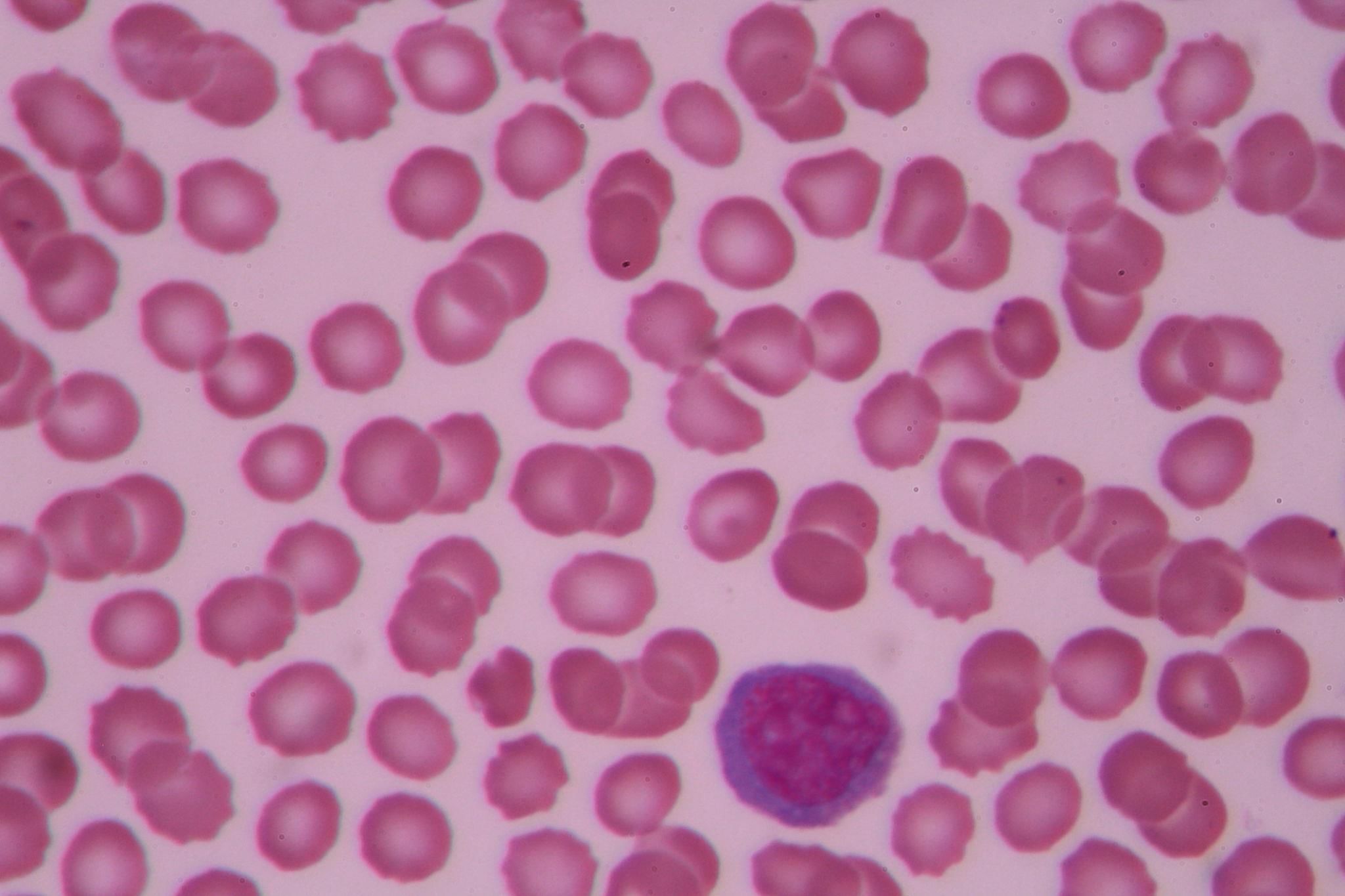
Red Blood Corpuscles (RBC)
- It is also called Erythrocytes, disc - shaped (for increased Surface Area), no nucleus contains a pigment called Haemoglobin, which gives blood its Red Color.
- Average Man : Amount of Haemoglobin is 14 - 15.6 gm / 100 cc of blood (11 - 14 in woman).
- RBCs are produced in spleen and liver in foetus and in bone marrow after birth @ 1.2 million/sec.
- Life of RBC is 120 days after which they are broken down in spleen or liver.
- Product of breakdown of haemoglobin is a pigment (yellow colour), called bilirubin which is normally disposed off through bile whereas haem transferred to red bone marrow. Retention of bilirubin leads to jaundice.
- No. of RBCs is 4.5 - 5 million/cubic mm of blood.
- At high altitude, RBCs increase in number.
- More : Polycythemia. Less: Anaemia
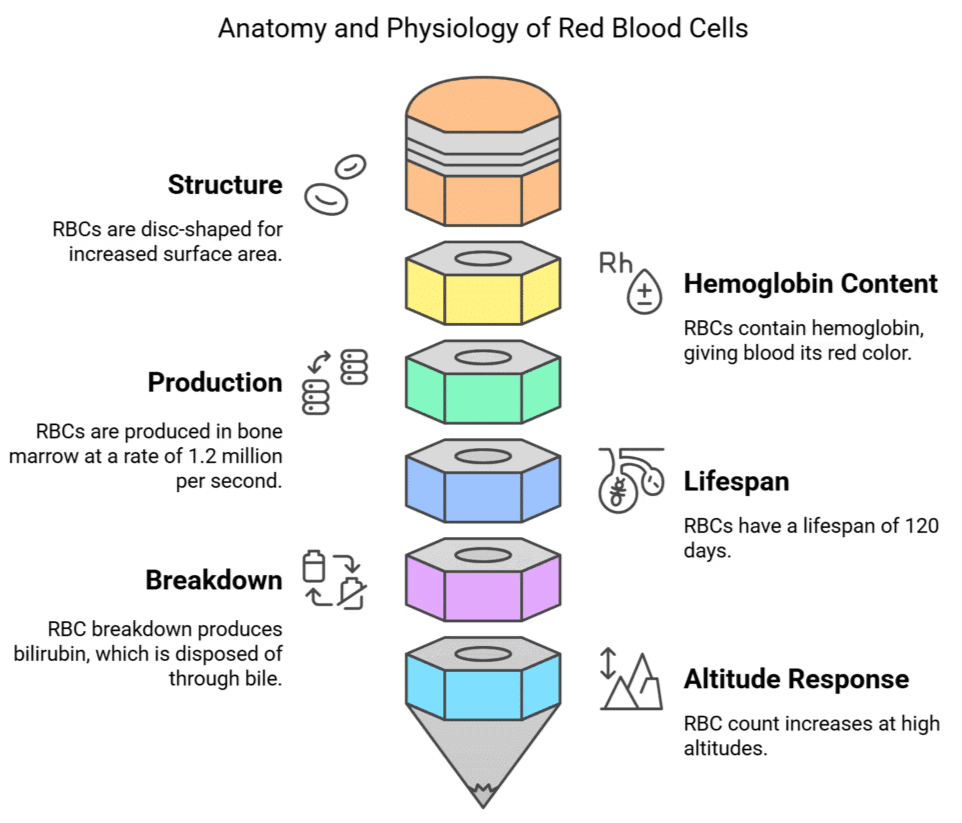
White Blood Corpuscles (WBC)
It is also called Leucocytes, rounded, with a nucleus, far less numerous than RBCs (1 : 400 - 500) (5,000 - 10,000 /cu mm), life 3 – 4 days, soldiers of body's defence system.
- 2 Types : Granulocytes (Basophils, Eosinophils, Neutrophils) and Agranulocytes (Monocytes, Lymphocytes)
- Basophils : Take up basic stains. Have an S-shaped nucleus. Secrete an anti - coagulant Heparin, which prevents clots within the blood vessels.
- Eosinophils or Acidophils : Take up acidic stains. Assists in defence mechanism.
- Neutrophils : Stain equally well with both acidic and basic dyes. Most numerous of the WBCs (65 - 70%).
- Monocytes : Largest of all. Very motile.
- Lymphocytes : 25% of the WBC. Takes part in antigen and antibody formation.
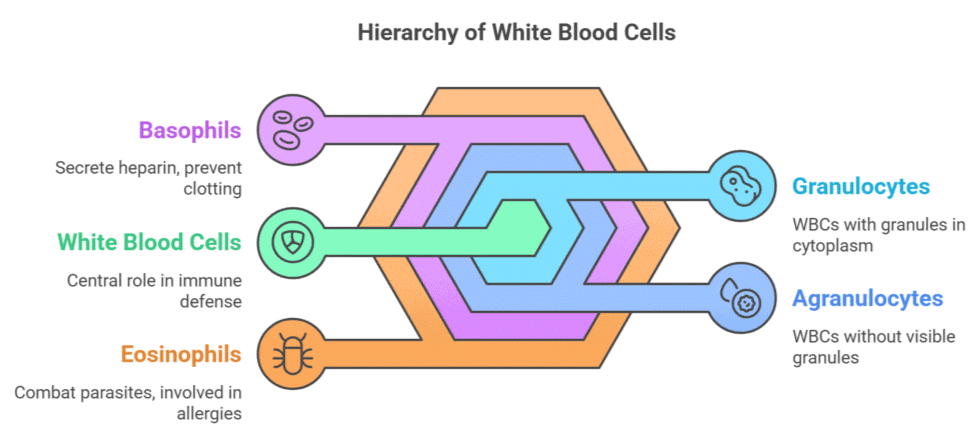
Platelets
- It is also called Thrombocytes, formed in bone marrow, about 250,000 / cu mm of blood,
- life 3 - 7 days, sets off blood clotting.
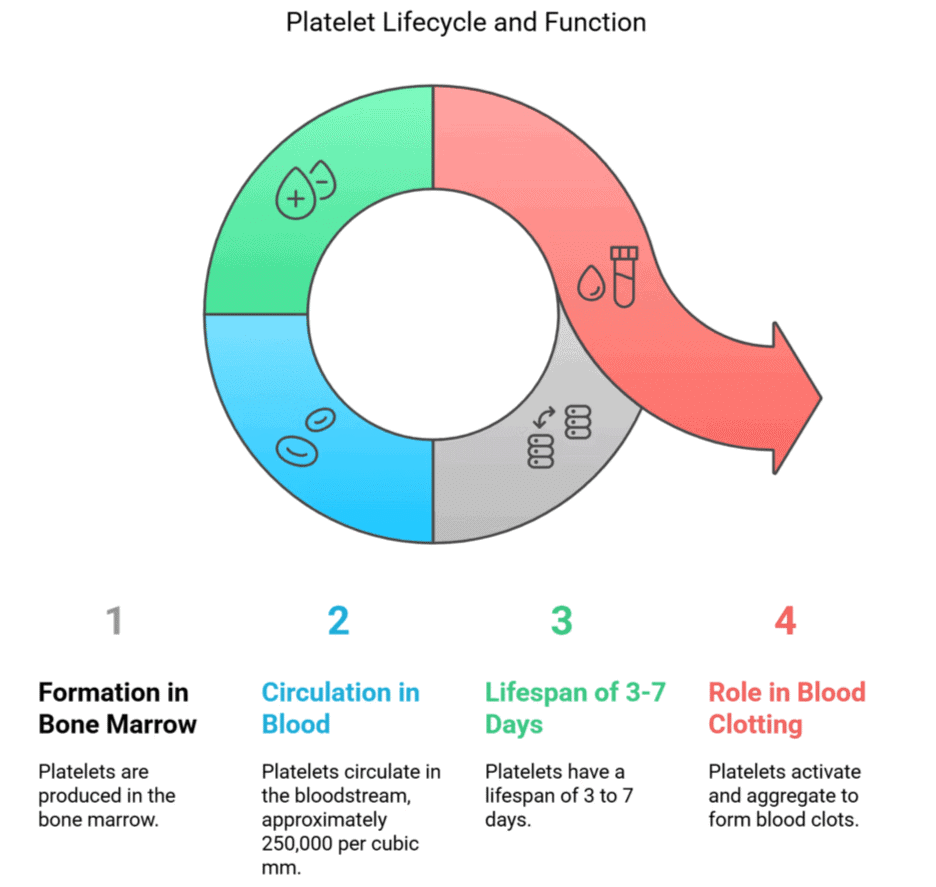
Plasma (65%)
- Watery part of blood, clear, yellow fluid.
- Contains about 90% water, proteins and organic salts.
- Plasma contains 7% proteins which include Albumin, Globulin and Fibrinogen.
- Plasma transports nutrients from the small intestine to the body tissues, and return the waste material to the kidneys, where it is filtered out.
- The protein in plasma includes antibodies also, to assist in defence mechanism.
- Regulates pH of blood.
- Approx. 60% blood is water only.

Lymph
- Lymph = Blood - RBC, i.e., Plasma + WBC.
- Lymph forms second circulatory system. It acts as middle man between blood and tissue.
- All interchanges of nutrients and waste products between blood and tissue takes place through lymph only.
- It has more of lymphocytes as compared to that of blood (Blood has more of neutrophils).
- Spleen produces lymph. At the same time it also acts as the graveyard of lymph.
- Spleen is also known by the name of 'Blood Bank' because RBCs, WBCs and Lymph are produced in spleen.
- It is situated above left kidney behind the stomach.
- Spleen produces lymph. At the same time it also acts as the graveyard of lymph.
- Spleen is also known by the name of 'Blood Bank' because RBCs, WBCs and Lymph are produced in spleen.
- It is situated above left kidney behind the stomach.
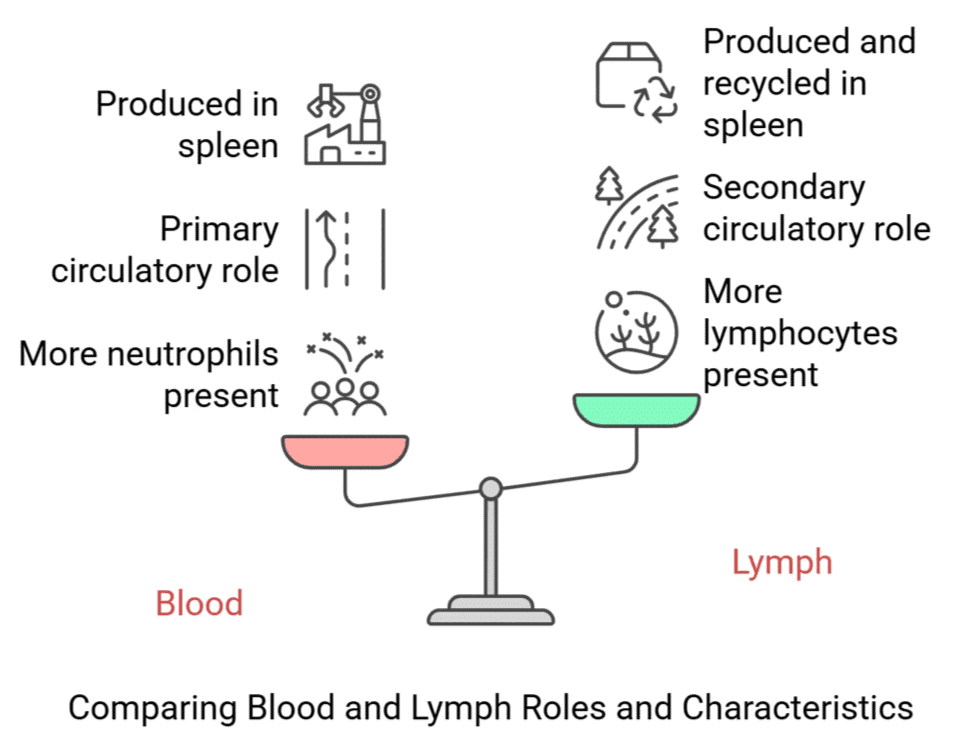
Blood Groupings
- Karl Landsteiner (Australian pathologist). He discovered A, B and O blood groups in 1900.
- Decastello and Sturle in 1902 discovered AB blood group.
- ABO system of blood groups is based on antigens and antibodies.
- Antigens: They are proteins and are found on the surface of RBCs.
- Antigens are A and B.
- Antibodies: They are produced in lymph glands and are present in blood plasma.
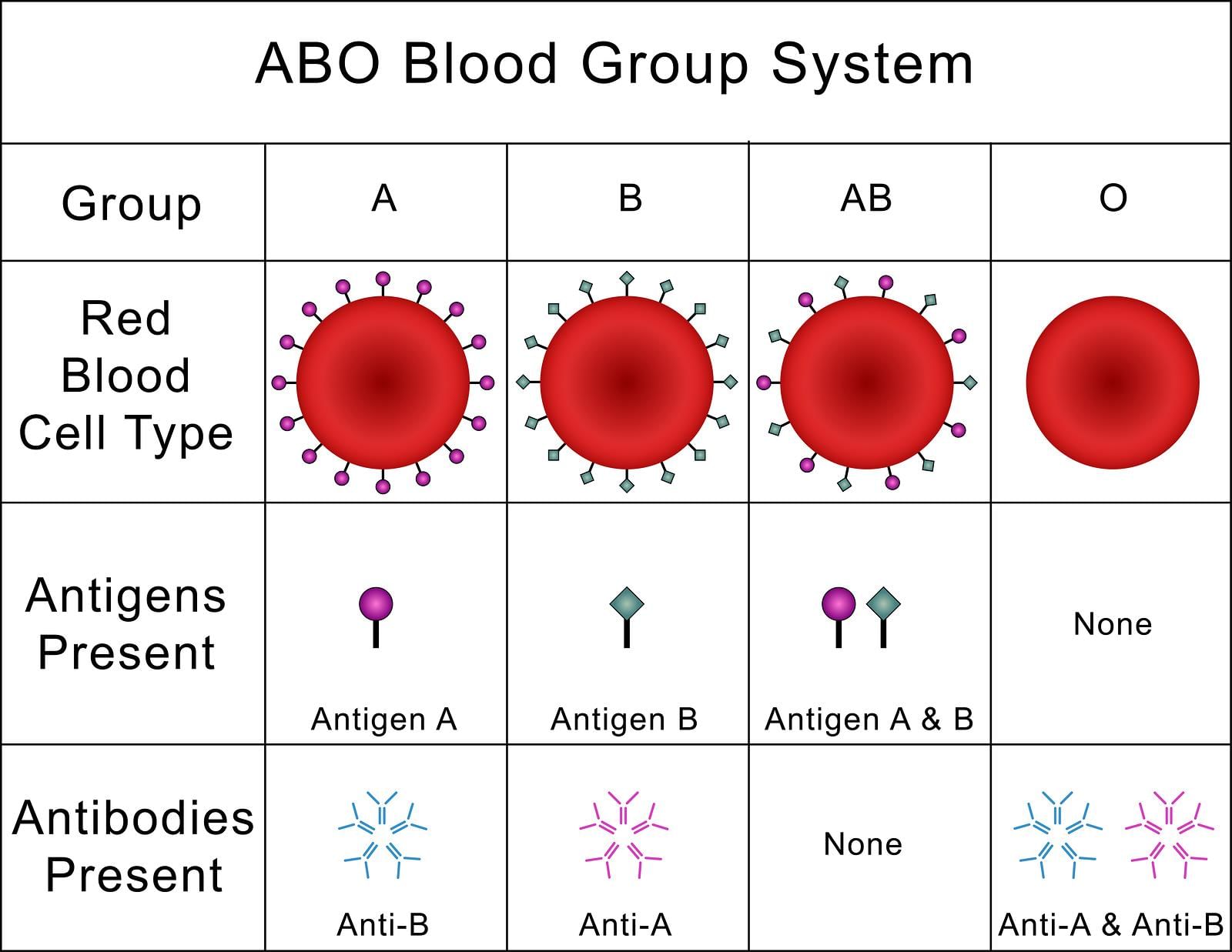
- Antibodies are a and b.
- AB: Universal recipient
- O: Universal donor
- RH Factor: It is based on Rh antigen.
- Discovered in 1940 by Landsteiner and A.S. Veiner.
- It discovered in Rhesus monkey.
- A person can be Rh+ or Rh-.
- Rh+ can receive blood from Rh- but no vice - versa.
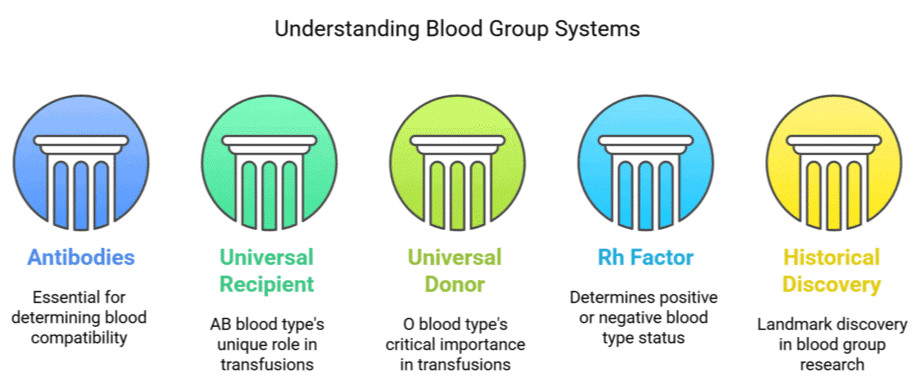
|
365 videos|701 docs|149 tests
|
FAQs on Blood - Notes, Biology - General Awareness - Bank Exams
| 1. What is blood and what are its main functions? |  |
| 2. What are the components of blood and their respective functions? |  |
| 3. How is blood type determined and what are the different blood types? |  |
| 4. How does blood clotting occur and why is it important? |  |
| 5. What are some common blood disorders and their symptoms? |  |
















